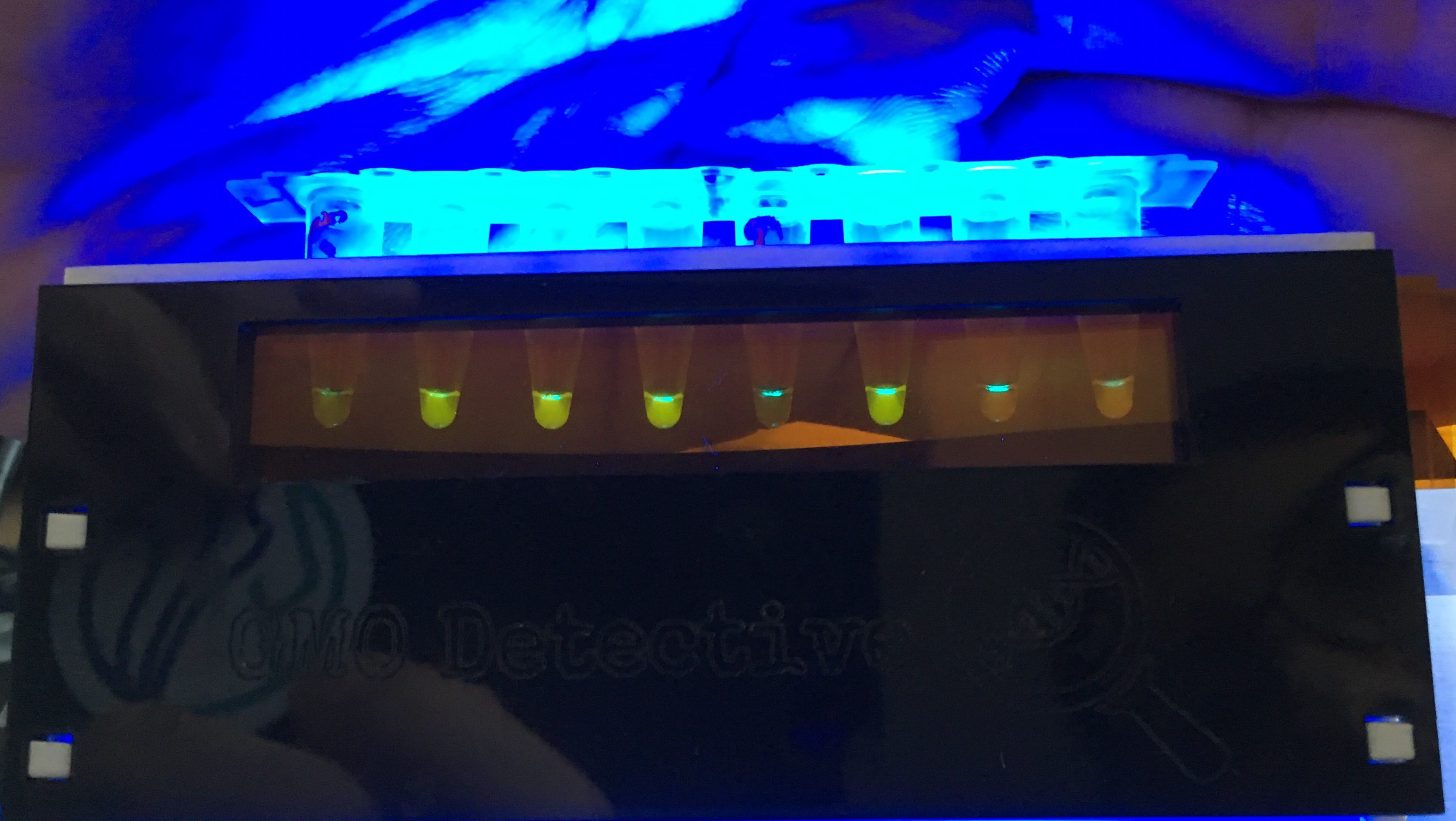
like this…
a DIY fluor detector too!

like this…
a DIY fluor detector too!
It’s so pretty!
sure, happily…
That is fascinating. How do you detect the virus using the light? And how reliable is it?
It’s a method of DNA amplification, amazingly possible with most things (enzyme and short ‘primers’ little bits of DNA) dried down and ready to go, targeting just of a little bit from the virus RNA genome. A sort of ‘quenched fluorescence’ mechanism for detection is used, that adds further specificity. Have a look at the ‘science’ page of the GMO detective site for more info, if you are keen. There are some rules that have to be followed to avoid false positives (esp never opening the tubes after the reaction is done!), but this method is super sensitive and specific. (The best primer sets can detect 1 copy in a rough sample, not purified, and nothing else.) I can put in the links for the JOGL project page and the GMO detective for you, but don’t want to seem like I am advertising. This is open science, not something being commercialised (we even hope to use the old-school version of the enzyme if possible, so it can be used anywhere, without patent worries), unlike most of the virus tests out there (that are just 70% reliable, officially…).
Does this method get above that 70% reliability?
Why advertising, @rachel? It’s sharing. And BTW, I’d be glad to put in a small donation. With @markomanka we were just discussing “hacking it” around SARS-COV-2 testing…
nice! you are very welcome to join in the project and the JOGL slack channel is #proj-nucleic-acid-detection… (I still would prefer something based on other techs, without amplification! just in case…)
over all, I would say definitely. @johncoate
however, the sampling and prep of the sample can make a huge difference.
as the method is aimed at environmental tests (not up someone’s nose), and can tolerate impurities, however, I think for sure it is better than the official RT-PCR 70% guarantee…
but, we are still optimising!

here are links
(haha was already somewhere here!)
and
https://gmodetective.com/
and tell me if I should give the IBAN for Hackuarium! ![]()
Sure, any chance of a receipt?
of course we thank and acknowledge donations! (our treasurer has some form, I guess. is that what you mean?) However, we are still only an ordinary swiss public association, not officially -yet- recognised as ‘tax exempt - d’utilité publique’ … That is actually on our agenda for the next board meeting, this Weds… 
Yes, what I meant was tax deductibility of donations 
Meanwhile, the larger number of science-denying people in the USA, mainly Republicans and Trumpers, have decided that this quarantine has gone on too long and it’s time to end it. Especially since the “fake news” media seems to be what is keeping it going.
This is todays USA. Pathetic.
it can certainly already be done, but it will be easier with the official designation (we made some baby steps this evening - but I guess it will be mid June before the official request is in)
I don’t know him, but I do know the Open Data Sicilia crowd. Likely they know each other.
He works for Redis Labs, specifically their open source implementations. He would be an excellent contact to have for the Redis Graph implementation for the new Graphryder prototype we’re working on with @gdpelican.
I know some people following on Twitter – at least a couple of Sicilians. Do you want an intro, or maybe we can just ping him on Twitter?